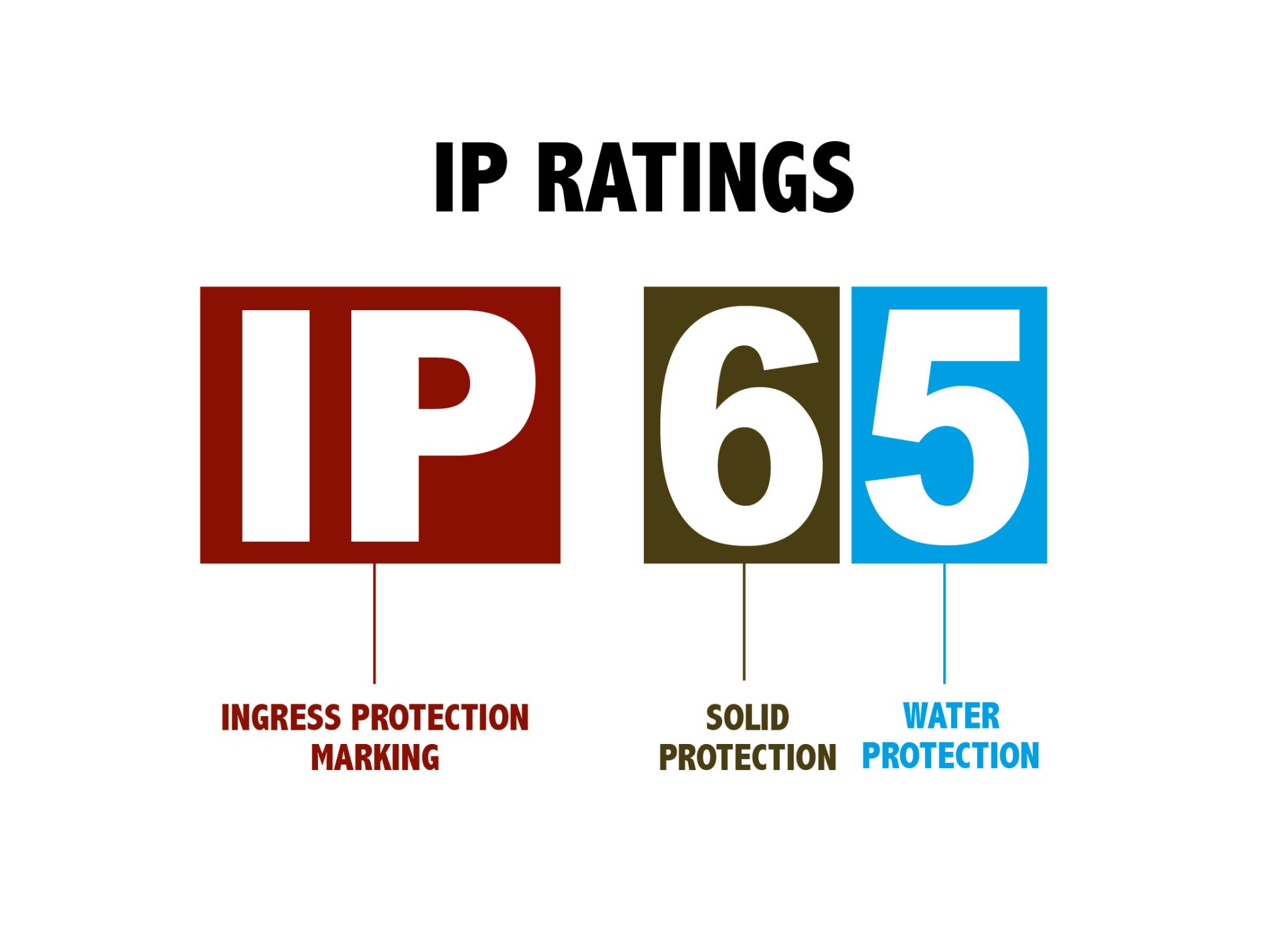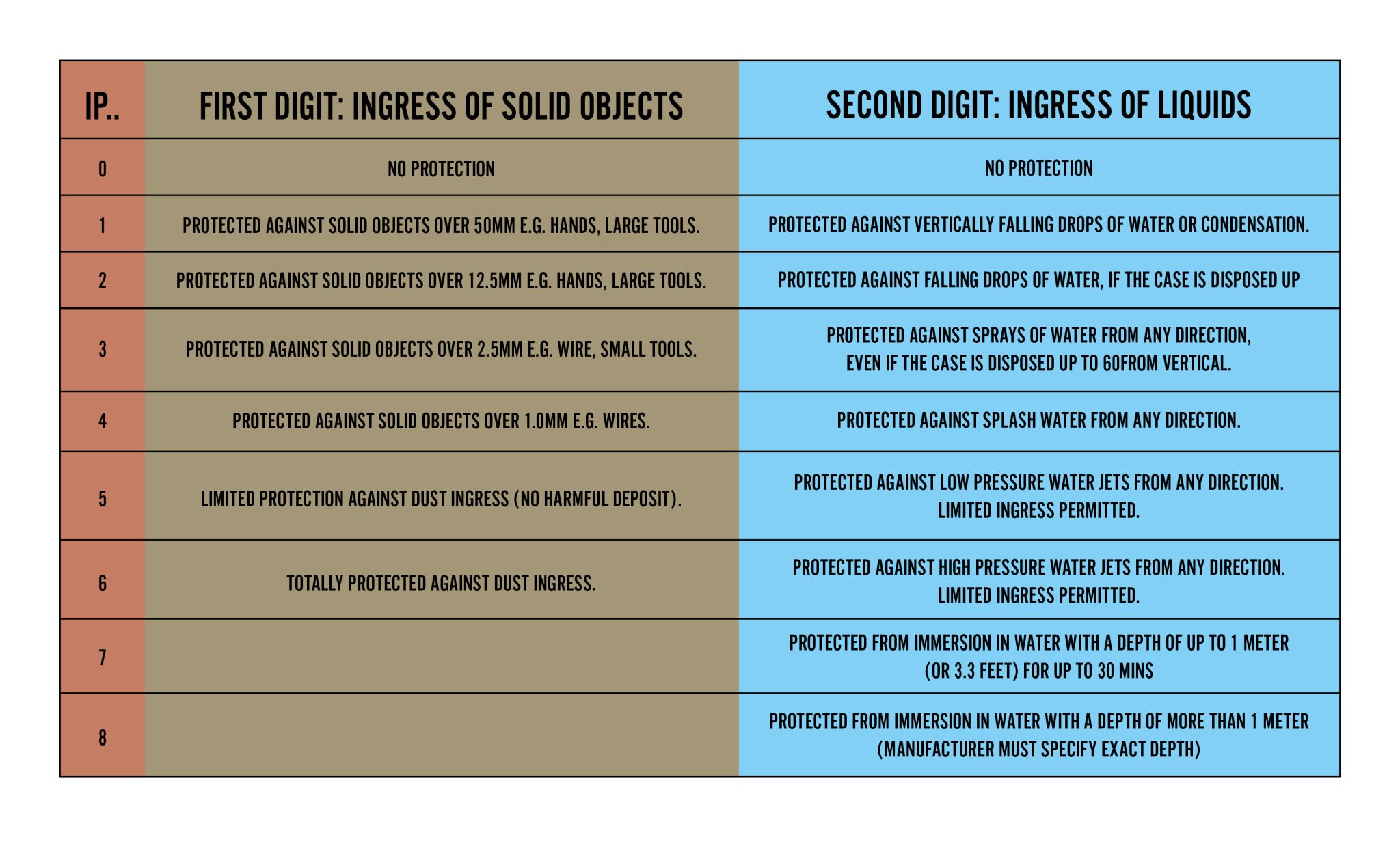
Many of us will have heard or used the term 'IP Rating', but what does the term mean? How does it affect what you're looking for?
What do the numbers mean?
IP or Ingress Protection ratings are used to give customers a clear indication of the item’s resistance against intrusion from foreign bodies.
There are two digits involved within an IP rating. Each of the digits reveals detailed information about the exact level of protection/resistance the item in question can be expected to deliver. The first indicates the degree of protection an enclosure offers those key components against dust, dirt and other damaging foreign bodies. The second digit is its overall resistance to moisture.
There are often slight differences in ratings depending on where in the world you’re buying from. However, they are standardised in most regions: in the UK, IP codes are assigned in accordance with British Standard BS EN 60529:1992. In Europe, they fall in line with IEC standard 60509:1989, and internationally they conform to EN 60529 certification.

Why do we use an IP Rating System?
The reason for having a universal system is so that buyers and users can be confident of how safe it is to use certain electrical or mechanical goods in specific environments and applications. It is designed to provide a far more specific account of precisely where and to what extent an item can resist moisture ingress, where other terms such as ‘waterproof’ would not give a clear definition.
Examples of IP Ratings and Uses
Low IP Ratings are appropriate for:
– Indoor use
– Protected use inside sealed products
– Inside sealed signage
– When using aluminum extrusions
High IP Ratings are appropriate for:
– Unsealed outdoor locations
– Places that have a lot of debris
– Areas with heavy foot traffic
– High splash areas
– High contact areas (people touching them)
– Wet locations

IP Ratings chart and table
The IP Ratings table below tells you what each digit in a standard IP code means. You can use this ingress protection chart to get a clear picture of the specific hazards and scenarios a given item’s mechanical or electrical components should be protected against, and to what extent in what sort of environments.
We’re here to help
BLE Lighting and Power can offer advice on which kind of product you will need for a particular environment, call our friendly sales team to discuss.
